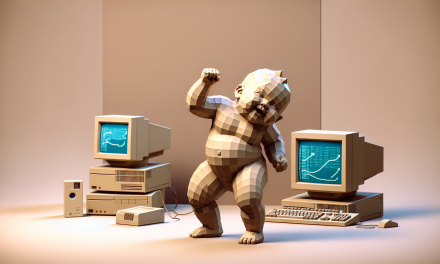Picture a young Swedish programmer named Markus “Notch” Persson, sitting alone in his small apartment in 2009, tinkering with an idea that seemed almost absurdly simple: what if you could break everything in a digital world into blocks, then rebuild it however you wanted? He had no grand business plan, no team of designers, no marketing budget. Just a wild hunch that people might enjoy endless creative freedom in a pixelated sandbox.
That simple idea became Minecraft, now the best-selling video game of all time with over 300 million copies sold. But here’s what makes Minecraft’s story truly remarkable: it didn’t just become a game—it became a gateway that introduced millions of people to the fundamental joy of coding and computational thinking, often without them even realising it.
From Humble Blocks to Digital Revolution
When Notch first started developing what he initially called “Cave Game” (later renamed Minecraft), he was working a day job and coding in the evenings. The game’s early development perfectly embodies the spirit of indie creativity—one person with a vision, learning and building simultaneously. Just like any budding coder, Notch encountered problems and had to figure out solutions. How do you make blocks feel solid? How do you generate infinite worlds? How do you make digging and building feel satisfying?
The beauty of Minecraft’s origin story lies in its constraints. Notch didn’t have the resources for complex graphics or sophisticated gameplay mechanics. Instead, he leaned into simplicity. Every element of the world—from dirt and stone to trees and mountains—would be made of cubes. This limitation became the game’s greatest strength, much like how constraints in coding often lead to the most elegant solutions.
Think about it this way: when you’re learning to code, starting with basic building blocks like variables, loops, and functions might seem limiting at first. You might wonder why you can’t just magically create complex programs immediately. But just as Minecraft’s simple blocks can be combined to create everything from cozy cottages to replica Hogwarts castles, those basic coding concepts are the foundation for building anything you can imagine.
The Digital Lego Philosophy
There’s a reason people often call Minecraft “digital Lego,” and it goes much deeper than just the blocky appearance. Both Minecraft and Lego embody what educators call “low floor, high ceiling” design—easy to get started, but with unlimited potential for complexity.
When you place your first block in Minecraft, you’re engaging in the same fundamental process that drives all programming: taking simple elements and combining them to create something more complex. Every structure starts with a single block, just like every program starts with a single line of code. The game teaches you to think systematically about construction—planning your foundation, considering structural integrity, thinking through the steps needed to achieve your vision.
But here’s where it gets really interesting: Minecraft naturally introduces players to core programming concepts without any code in sight. Want to create an automatic door? You’ll need to understand logic circuits using redstone. Want to build a sorting system for your items? You’re essentially creating algorithms. Want to construct a massive castle efficiently? You’ll find yourself breaking the project down into smaller, manageable tasks—the essence of computational thinking.
Consider the way experienced Minecraft players approach large builds. They don’t start by placing random blocks and hoping for the best. Instead, they plan, prototype, test small sections, and gradually build up complexity. Sound familiar? It should—this is exactly how skilled programmers approach complex projects.
Redstone: Programming with Virtual Electricity

If regular Minecraft building is like digital Lego, then redstone is like digital electronics. Redstone, Minecraft’s magical red dust that can transmit power and create logic circuits, accidentally became one of the most intuitive introductions to programming logic ever created.
Players working with redstone learn about inputs and outputs, logic gates, memory storage, and timing—all fundamental concepts in computer science. A player creating a redstone contraption that automatically opens a door when they approach has just built their first sensor-triggered system. Someone designing a complex sorting machine for their storage room has essentially created a database with automated organisation.
What makes redstone particularly brilliant as a learning tool is that it provides immediate visual and physical feedback. When your logic circuit doesn’t work, you can see exactly where the problem is. The Redstone dust lights up, showing you the flow of your “electricity.” Doors actually open and close. Items physically move through your sorting systems. This tangible cause-and-effect relationship makes abstract programming concepts suddenly concrete and understandable.
Many professional programmers today trace their first understanding of boolean logic, conditional statements, and system design back to hours spent figuring out Redstone contraptions. They were learning to debug, optimise, and think systematically—all while having fun in a game.
The Modding Gateway: From Player to Creator
Perhaps Minecraft’s greatest contribution to coding education happened almost by accident: its incredibly active modding community. Modding—short for modifying—allows players to change how the game works by writing their own code additions.
The journey from Minecraft player to mod creator is beautifully organic. It typically starts with curiosity: “What if this game had dragons?” or “Wouldn’t it be cool if I could automate farming?” These questions lead players to discover mods created by others, then gradually to wonder how those mods work, and finally to try creating their own.
Minecraft mods are often written in Java, a professional programming language used in everything from Android apps to enterprise software. But the motivation to learn Java isn’t abstract—it’s driven by the burning desire to add something amazing to a world they already love. This emotional investment makes all the difference in learning. Suddenly, understanding object-oriented programming isn’t just about passing a test; it’s about bringing your creative vision to life.
The modding community also demonstrates another crucial aspect of programming culture: collaboration and knowledge sharing. Experienced modders regularly help newcomers, sharing code, explaining concepts, and building upon each other’s work. This mirrors the open-source movement that drives much of modern software development.
Block-Based Coding: Making Programming Visual
The success of Minecraft helped inspire and validate a parallel revolution in coding education: block-based programming languages like Scratch, Blockly, and MakeCode. These tools take the same principle that makes Minecraft so accessible—visual, snap-together building blocks—and apply it directly to teaching programming concepts.
In block-based coding environments, instead of typing out lines of code that might contain syntax errors, learners drag and drop visual blocks that represent programming concepts. A “repeat 10 times” block looks like a container that holds other instruction blocks inside it, making the concept of a loop immediately visual and intuitive.
This approach removes the frustration of syntax errors that often discourage beginners. You can’t accidentally misspell a command or forget a semicolon when you’re clicking on pre-made blocks. This lets learners focus on the logic and problem-solving aspects of programming—the actual thinking like a coder—rather than getting stuck on the mechanics of typing code correctly.
Many educators have found that students who start with block-based programming and games like Minecraft transition more smoothly to text-based coding languages. They already understand the concepts; they’re just learning a new way to express them.
Creative Sandbox Thinking

What makes Minecraft particularly powerful as a gateway to coding is its sandbox nature—there’s no single “right” way to play, no predetermined path to follow, no boss battles you must win to progress. This open-ended approach mirrors the creative problem-solving that makes programming so engaging.
In most traditional video games, you’re solving puzzles designed by someone else. In Minecraft, you’re creating your own challenges and then figuring out how to solve them. Want to build an underwater city? You’ll need to figure out how to manage breathing, lighting, and construction logistics. Want to create a roller coaster that loops through multiple biomes? You’ll need to plan routes, manage elevation changes, and ensure passenger safety.
This self-directed problem-solving develops what educators call “computational thinking”—the ability to break complex problems down into smaller, manageable pieces, recognise patterns, and design step-by-step solutions. These skills transfer directly to programming, but they’re also valuable for tackling challenges in any field.
The sandbox approach also encourages iteration and experimentation—key aspects of the programming mindset. Your first attempt at building something in Minecraft rarely works perfectly. You build, test, identify problems, and improve. You might rebuild the same structure multiple times, each iteration teaching you something new.
This process of continuous improvement is exactly how professional developers work—you write code, test it, find the bugs, and refine it. Minecraft makes this cycle feel natural and enjoyable rather than frustrating.
The Community That Codes Together
But perhaps the most overlooked aspect of Minecraft’s impact on coding culture is how it demonstrated the power of community-driven creation. Long before “collaborative coding” became a corporate buzzword, Minecraft players were naturally working together on massive projects, sharing techniques, and building upon each other’s innovations.
Walk into any Minecraft server and you’ll witness something remarkable: spontaneous collaboration between people who’ve never met, working together to solve complex logistical challenges. Building a massive city requires planning infrastructure, coordinating resources, and managing different specialties—urban planners, architects, engineers, and artists all working toward a common goal. Sound like a software development team? It should.
This collaborative aspect taught an entire generation that creation is often more fun and more effective when done together. Many of today’s programmers got their first taste of version control, project management, and collaborative problem-solving not in a computer science class, but while coordinating a group build on their favourite Minecraft server.
The Accidental Coding Curriculum
What makes Minecraft’s influence so profound is that it taught coding concepts without feeling like education. Players weren’t sitting through lectures about algorithms; they were figuring out the most efficient mining patterns. They weren’t memorising the principles of user interface design; they were building control panels for their redstone contraptions that their friends could actually use.
This stealth learning approach has become a holy grail for educators everywhere. How do you teach complex technical concepts in a way that feels engaging rather than overwhelming? Minecraft proved that the secret ingredient is genuine creative motivation. When people care deeply about the outcome—when they’re building something that matters to them—they’ll push through complexity that would normally feel impossible.
I’ve watched 8-year-olds explain redstone circuits with the same clarity and enthusiasm that computer science professors bring to discussing boolean logic. They might not know they’re learning formal logic, but they absolutely understand how to chain conditional statements together to create complex behaviours. They’re thinking like coders without realising it.
From Blocks to Careers
The real testament to Minecraft’s impact isn’t just in education—it’s in careers. There’s an entire generation of programmers, game developers, engineers, and digital creators who trace their professional interests back to childhood hours spent in blocky worlds.
Game development studios now regularly hire people whose portfolios include elaborate Minecraft creations alongside traditional programming projects. The skills transfer more directly than you might expect: someone who spent years perfecting redstone contraptions has already demonstrated logical thinking, systematic debugging, and creative problem-solving under constraints.
But the influence extends far beyond game development. Urban planners use Minecraft to create participatory design processes with communities. Architects prototype and test ideas in virtual environments. Educators across disciplines use its collaborative sandbox approach to teach everything from history to environmental science. The computational thinking skills that Minecraft naturally develops—pattern recognition, decomposition, abstraction, and algorithm design—are valuable in any field that involves complex problem-solving.
The Quiet Revolution
Looking back, it’s remarkable how quietly this revolution happened. There were no grand pronouncements about transforming education or preparing the next generation of programmers. Notch was just trying to make a fun game. Players were just trying to build cool stuff. Educators discovered the connections afterwards, when they noticed that kids who played Minecraft seemed more comfortable with programming concepts.
This organic evolution might be the most important lesson of all. The most effective educational innovations often don’t announce themselves as education—they disguise learning as play, structure as freedom, complexity as creativity. Minecraft proved that given the right environment, people naturally gravitate toward increasingly sophisticated challenges.
Building Tomorrow’s Builders
As artificial intelligence and automation reshape the workforce, the skills that Minecraft accidentally teaches become even more valuable. While specific programming languages and tools constantly evolve, the fundamental ability to think systematically, break down complex problems, and create solutions through iteration remains constant.
More importantly, Minecraft demonstrated something that formal education often struggles to convey: that technology isn’t just something you consume—it’s something you can shape. Every player who moved from placing blocks to writing mods learned a crucial lesson about agency in the digital world. They discovered that they don’t have to be passive consumers of other people’s creations; they can be active creators themselves.
This mindset shift—from user to maker—is perhaps Minecraft’s most lasting contribution to coding culture. It planted the seed that growing understanding that with creativity, persistence, and the right building blocks, you can create anything you can imagine.
The Block That Started It All
Thirteen years after Notch placed that first virtual block, Minecraft continues to introduce new players to the joy of systematic creation. Each new generation discovers the same fundamental truth that has driven both game development and programming from the beginning: complex, beautiful, useful things can be built from simple, well-understood pieces.
Whether you’re placing cobblestone blocks to build a castle or writing lines of code to build an app, you’re engaging in the same essentially human activity—taking raw materials and arranging them thoughtfully to create something that wasn’t there before. Minecraft just happened to make that process so engaging that millions of people taught themselves to think like coders without even trying.
And maybe that’s the real genius of it all. Sometimes the best way to learn something complex is to not think of it as learning at all—just as building, playing, and discovering what’s possible when you start with a simple block and an infinite world of possibility.
Want to start your own journey from blocks to code? Try experimenting with redstone circuits in Minecraft, or explore block-based programming languages like Scratch or MakeCode. Remember: every expert was once a beginner who decided to place that first block.








